1. Introduction:
Egyptian mythology, a tapestry of tales woven over millennia, profoundly shaped ancient cultures, echoing their beliefs, hopes, and fears. Central to this pantheon is Osiris, a deity emblematic of life’s cyclical nature, from birth and betrayal to death and resurrection. His legend, steeped in symbolism, offers insights into ancient Egyptian spiritual and societal values, revealing how they grappled with existential questions that continue to resonate in contemporary times.
| Origin | Ancient Egyptian Civilization |
|---|---|
| Classification | God |
| Family Members | Geb (Father), Nut (Mother), Isis (Sister/Wife), Seth (Brother), Nephthys (Sister), Horus (Son) |
| Region | Egypt |
| Associated with | Afterlife, Resurrection, Dead, Fertility, Agriculture |
2. Osiris: The Myth and the Legend:
Osiris, the embodiment of the eternal cycle of life, death, and rebirth, boasts a lineage steeped in power and intrigue. Born to the sky goddess Nut and the earth god Geb, Osiris was destined for greatness from his very inception. He was not an only child, though; he had siblings who played pivotal roles in his tale. There was Seth, the god of chaos and disorder, Isis, the goddess of magic and motherhood, and Nephthys, associated with death and transition. These relationships were not just markers of kinship but were intertwined with his destiny in myriad ways, establishing the foundation for one of the most captivating myths of ancient Egypt.
The central narrative surrounding Osiris revolves around betrayal, redemption, and resurrection. Seth, driven by jealousy and ambition, hatches a sinister plot against his brother, leading to Osiris’s tragic death. This act, however, was far from the end. With the sheer determination and magical prowess of Isis, Osiris was resurrected, albeit briefly, resulting in the conception of their son, Horus. His eventual rebirth as the ruler of the Underworld isn’t just a tale of victory over death. It serves as a potent symbol of hope, renewal, and the immutable cycle of existence.
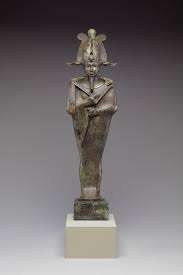
Osiris’s death and subsequent resurrection cast him in a unique light amongst the pantheon of Egyptian gods. He assumed the mantle of the god of the afterlife, presiding over the realm of the dead with a just and fair hand. More than just a ruler, he became the quintessential judge, assessing the deeds of souls with the famed ‘Weighing of the Heart’ ceremony. This critical role made Osiris not only a beacon of hope for eternal life but also a moral compass, emphasizing the importance of a life well-lived, grounded in principles of truth, justice, and righteousness.
3. The Worship and Cult of Osiris:
The veneration of Osiris transcended mere admiration; it culminated in a fervent cult following that lasted for millennia, laying the foundation for many rituals, temples, and festivals that became synonymous with ancient Egyptian spiritual life.
At the heart of Osiris worship were the magnificent temples dedicated to him. The most prominent of these stood in Abydos, believed to be the burial place of the god himself. Every year, thousands of pilgrims traveled vast distances to partake in the rituals and ceremonies held in this sacred city. Apart from Abydos, the city of Busiris also played host to a major temple of Osiris, further attesting to his widespread reverence across Egypt.
The Osirian rituals weren’t just restricted to temples. They spilled over into daily life and special festivals. The ‘Feast of Osiris’ was one such grand event, marking the death and rebirth of the god. This festival not only celebrated his resurrection but also served as a poignant reminder of life’s cyclical nature, promising rebirth after death.
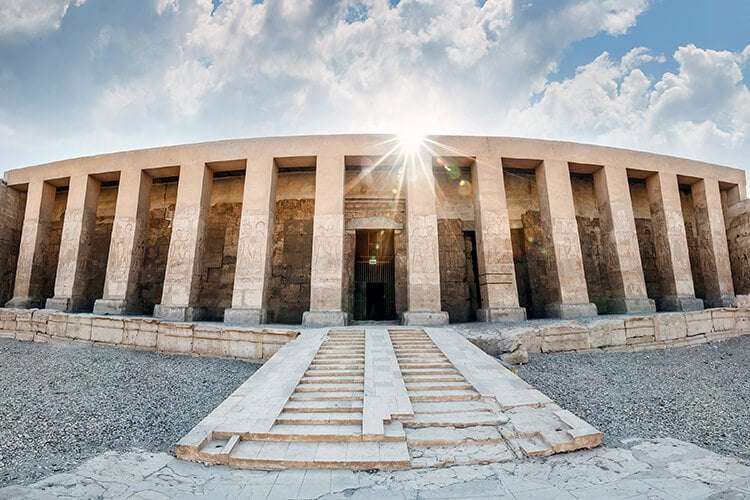
Diving into the Osirian Mysteries, one finds a series of complex, esoteric rites reserved for the initiated. These sacred rites were shrouded in secrecy, revealing the deeper spiritual truths of Osiris’s myth. They represented the soul’s journey, emphasizing death and rebirth, mirroring Osiris’s own experiences. It was believed that those who partook in these mysteries achieved a deeper understanding of life and the cosmos, preparing them for the afterlife.
Exclusive Research:
Recent archaeological excavations have unearthed intriguing artifacts that provide a glimpse into the worship practices dedicated to Osiris. In a groundbreaking discovery near Abydos, a ceremonial boat was found, symbolizing Osiris’s journey through the underworld. This find, coupled with inscriptions and religious texts, paints a vivid picture of the rituals, chants, and ceremonies performed in honor of the god. Additionally, evidence of annual procession routes suggests that grand parades marked key festivals, with devotees carrying symbolic representations of the god through the streets, bridging the gap between the terrestrial and the divine.
4. Osiris in Art and Culture:
Osiris, with his compelling myth and profound significance, became a central figure not only in religious practices but also in the diverse tapestry of ancient Egyptian art and culture.
Ancient Egyptian art offers countless representations of Osiris, testifying to his esteemed position. Most notably, he is frequently depicted as a mummified king, holding the crook and flail – symbols of authority and rulership. His green or black skin tone in these portrayals symbolizes rebirth and the fertile land alongside the Nile, respectively. Hieroglyphs, the written language of the ancients, further solidified his story. The ‘djed’ pillar, a key symbol associated with Osiris, represents stability and is often found inscribed on temple walls, tombs, and papyrus scrolls.
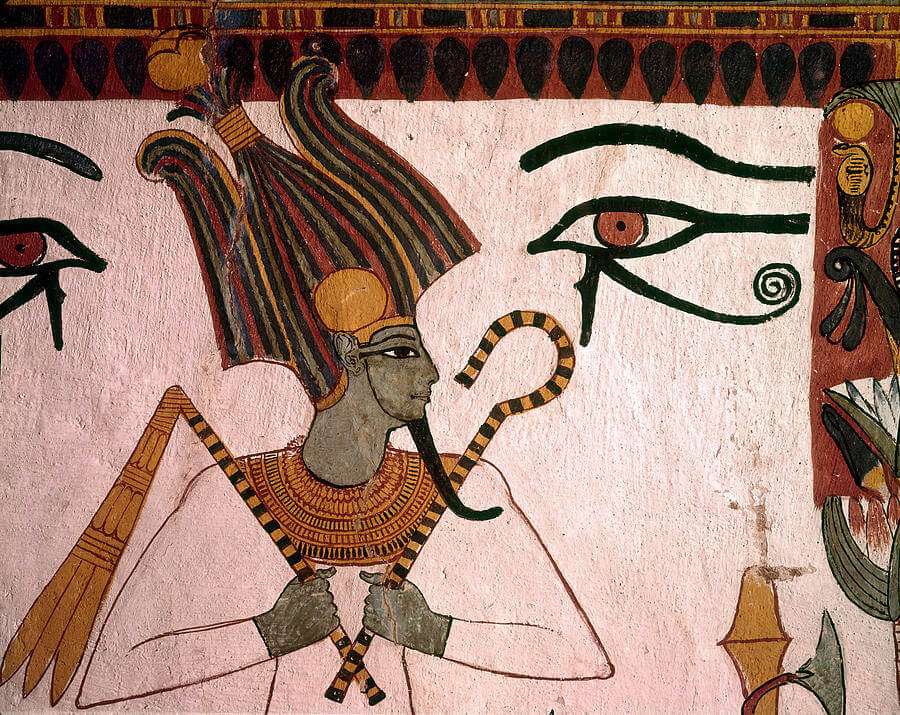
Beyond the borders of Egypt, Osiris left an indelible mark on global art and culture. His story resonated through literature, from ancient hymns and prayers to modern poetry and prose. He found his voice in music, from the haunting melodies of ancient flutes to the symphonic orchestrations of later eras. Sculptures, paintings, and even dance forms from various cultures have, over the ages, been influenced by this god of resurrection.
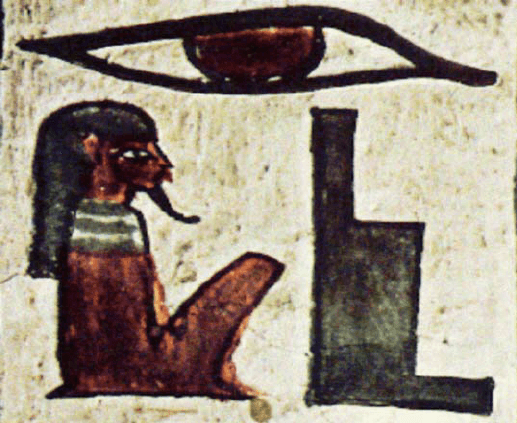
Original Insight:
Osiris’s influence isn’t an isolated phenomenon. When we cast our net across world cultures, parallels emerge. In Greek mythology, for instance, the story of Dionysus bears striking similarities to Osiris’s tale. Both gods faced death and were subsequently reborn, becoming symbols of eternal life cycles. In Hinduism, Lord Shiva, like Osiris, is a deity associated with cyclicality – destruction and creation. These parallels aren’t mere coincidences but hint at a shared human experience and understanding. They underscore a universal quest to understand life, death, and what lies beyond, and how societies, through their deities and myths, grapple with these eternal questions.
5. The Legacy of Osiris in Modern Times:
Centuries have passed, but the legacy of Osiris remains undiminished, continuing to shape our understanding of life, death, and the vast cosmos.
In today’s varied beliefs, Osiris impacts our views on death and the afterlife. As science and philosophy progress, our understanding evolves. Yet, the idea of life after death endures, championed by Osiris. His resurrection brings comfort and hope. His tale shapes theology, spirituality, and existential thought.
Pop culture, with its dynamic ability to mirror societal ethos, has embraced Osiris in various forms. Films, often the pulse of modern narrative storytelling, have drawn from the mythos surrounding Osiris, presenting allegorical tales of betrayal, redemption, and rebirth. Literature, too, has been no stranger to his influence, with novels, plays, and poems drawing parallels with his story. From graphic novels to video games, Osiris has found resonance, a testament to the enduring nature of his legend.
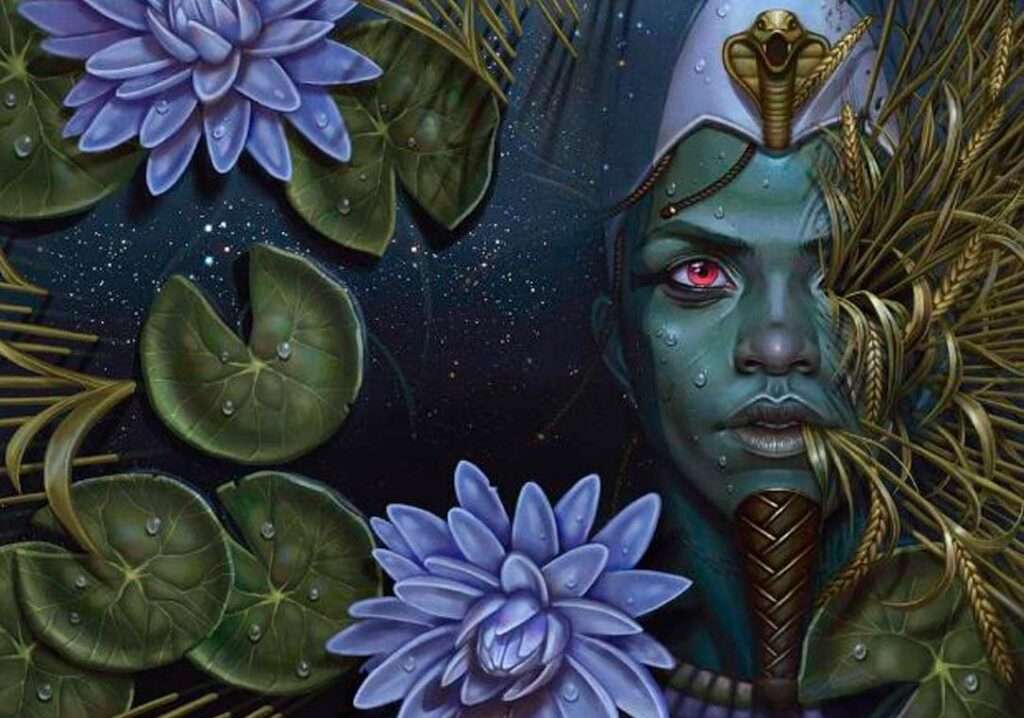
Real-life Application:
The tale of Osiris isn’t just a distant myth; it holds profound lessons for the contemporary individual. Osiris’s resilience, in the face of betrayal and adversity, serves as a beacon for all those navigating the challenges of modern life. His story underscores the importance of integrity, justice, and the unyielding spirit of renewal. In a world often riddled with uncertainties, drawing inspiration from Osiris means recognizing that setbacks are but temporary, and with perseverance, one can rise again, stronger and wiser.
6. Common Misconceptions and Clarifications about Osiris:
Over the eons, as stories travel and evolve, they often gather layers of interpretation, sometimes leading to misconceptions. Osiris, given his profound significance in Egyptian mythology, hasn’t been immune to such misconstruals.
Misconception 1: Osiris was solely a god of the dead.
Clarification: While Osiris did play a significant role as the ruler of the afterlife, his domain wasn’t confined to the deceased alone. He was also associated with fertility, agriculture, and the cyclical nature of life.
Misconception 2: Osiris’s resurrection was a permanent return to the realm of the living.
Clarification: While Osiris was resurrected by Isis, he didn’t return to live among the gods permanently. Instead, he became the ruler of the Underworld, overseeing the realm of the dead.
Misconception 3: The ‘djed’ pillar is a symbol of Osiris’s spine.
Clarification: While the ‘djed’ pillar is associated with Osiris, interpreting it strictly as his spine is a simplification. It stands for stability and endurance and is intrinsically linked with Osiris’s resurrection but encompasses broader meanings too.
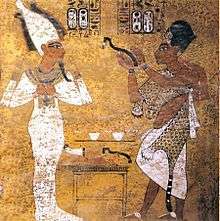
Expert Opinion: Dr. Zahi Hawass, a leading Egyptologist, emphasizes the multi-faceted nature of Osiris. In one of his publications, he states, “Osiris, for the ancients, was not just a deity to be revered post-mortem. He was a symbol of hope, the embodiment of life’s eternal cycle – from birth to death and beyond.” Similarly, Dr. Joann Fletcher, renowned for her works on Egyptian culture, comments, “Understanding Osiris requires delving beyond the surface. He isn’t just a god; he’s an idea, a representation of ancient Egypt’s most profound beliefs.“
7. Conclusion:
Osiris’s legacy, with its themes of renewal and redemption, stands as a testament to the enduring relevance of ancient myths in modern contexts. His tale, while rooted in the sands of ancient Egypt, remains universally resonant, urging us to reflect upon life’s mysteries and intricacies. By delving deeper into such stories, we not only understand past civilizations but also gain insights into our own beliefs, aspirations, and the shared human experience.
